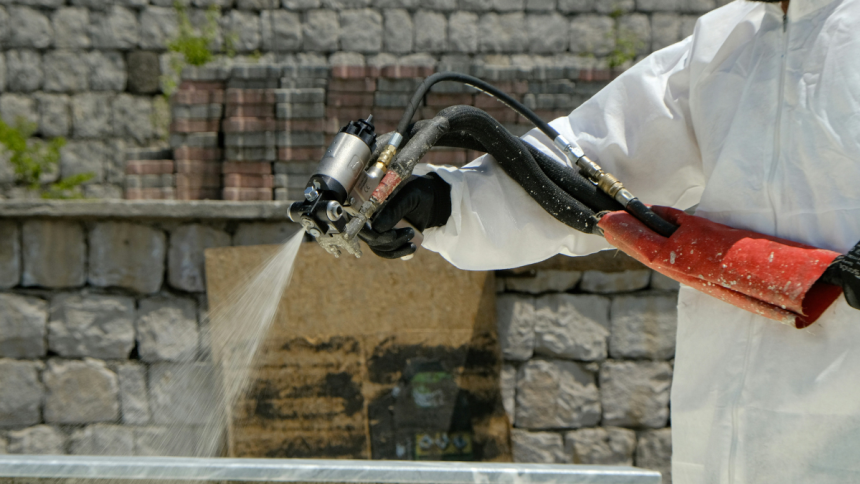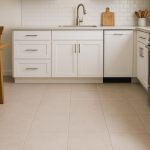Singapore is one of the humid regions that tends to develop mold easily. It destroys property and causes indoor air quality. Mold remediation procedures have therefore embraced technology to eliminate mold. Now, detecting, cleaning, and preventing mold come with modern tools that are better than previously. Thus, real estate owners can use safer and healthier premises.
Most importantly, technology saves time and money and conserves health. This blog will discuss the recent technology in mold remediation services in Singapore. All the innovations are involved in detection, cleaning, and prevention. Simply put, technology is changing how professionals currently deal with mold issues.
1. Infrared Thermal Imaging Cameras
Infrared thermal imaging cameras can see temperature variations in walls and ceilings. Mold usually develops in damp places, which are colder than their immediate surroundings. Thus, thermal imaging can be used to find out where there is hidden moisture beyond opening walls. There is an example of how the inspectors can locate mold behind tiles or drywall rather quickly. Consequently, the diagnosis process is reduced and less intrusive. Most importantly, this eliminates instances of unwarranted demolitions. Similarly, property owners save money and time. This technology has, therefore, become a common tool when carrying out professional mold inspections.
2. Moisture Meters
Moisture meters indicate the extent of moisture in structures. This happens when mold grows in a wet environment, so it is essential to identify moisture. As such, the professionals identify problem spots using such meters. For example, they will be able to investigate the presence of dampness behind a wall, floor, ceiling, etc. Consequently, remediation teams have a definite place to work. Most importantly, moisture meters can be used to ensure a place is dry after cleaning. Similarly, they avoid the recurrence of mold. This device is efficient, though simple, and thus required during mould remediation.
3. HEPA Air Filtration Systems
Mold spores are removed by High-Efficiency Particulate Air (HEPA) filters. Spores may be carried around during the process of remediation. Thus, the air is purified through continuous air filtration by HEPA air scrubbers. For example, they filter 99.97 percent of particles down to 0.3 microns. Consequently, the air in buildings is more hygienic. Most importantly, such systems safeguard the well-being of employees and inhabitants. Similarly, the HEPA technology averts contamination to unaffected areas. Not only this, but it is also required during safe mold removal.
4. Air Scrubber Machines
Air scrubber machines facilitate the separation of pressure levels, which ensures that mold spores are not allowed to leave the work area. They suck dirty air through filtration and ventilate clean air outdoors. Thus, they are valuable in large-scale remediation projects. An example is that hospitals employ them when carrying out mold removals to safeguard the patients. Due to this, the chances of airborne mold spreading are highly minimized. Most importantly, this will prevent the rest of the property from getting into danger. Similarly, it promotes adherence to safety codes. Air scrubber machines are crucial in professional mold control.
5. Dry Ice Blasting
Dry ice blasting refers to cleaning with frozen pellets of carbon dioxide. These pellets are shot in moldy areas to remove contamination. As such, it works well in cleaning wood, brick, and metal without spoiling them. As an example, it may remove mold on attic beams without the use of water. Consequently, it does not introduce thirst in the space. Most importantly, it is quick and environmentally friendly. Similarly, it does not leave much cleanup because the dry ice vaporizes. It is therefore famous for its significant and sensitive surfaces.
6. Ozone Generators
Ozone generators emit ozone gas to kill mold spores and remove odors. Ozone can get deep into materials and reach concealed mould. Thus, it works well in post-remediation therapy. As an illustration, a room with a musty smell can be deodorised by using an ozone generator after cleaning up. Because of this, the place is rendered fresh and clean. The most important thing about this method is that it can restore comfort in indoor environments. Likewise, it prevents the regrowth of mold. Therefore, ozone generators are commonly applied with physical cleaning techniques to achieve the best outcomes.
7. UV-C Light Technology
Mold spores are destroyed by exposure to ultraviolet-C (UV-C) light, which damages the DNA. This does not allow them to reproduce. Hence, UV-C lamps are applied to air ducts and HVACs. An example is that they prevent the spread of mold by ventilating. Because of this, the air is cleaner and healthier. Most importantly, the process of UV-C treatment is non-chemical. Similarly, its use under the hands of skilled personnel is safe. Thus, cleaning up mold indoors using UV-C light is a lasting solution to mold prevention.
8. Biodegradable Antimicrobial Solutions
Mold is now killed with antimicrobial sprays that are environmentally friendly. These ways are harmless to both humans and animals, as they continue to be effective. They suit homes, offices, and other sensitive areas such as schools. For example, when molds have been removed from walls, one can spray with biodegradable sprays to ensure they will not grow back. Consequently, one can have clean and safe inside areas that do not have the harsh stench of chemicals. Most importantly, such products comply with environmental safety requirements. Similarly, they promote green cleaning. As a result, more modern biodegradable solutions are being used instead of outdated chemical applications.
The Bottom Line
The newer technology of the mold remediation services offers the safest, quickest, and most effective outcomes. It can be infrared cameras and biodegradable treatments; every invention is essential. Hence, property owners stand to breathe purer air, have healthier environments, and incur less repair costs. Most importantly, the instruments ensure that mold is not manifested again, which gives protection in the long run. Thus, it becomes a good decision to invest in technologically advanced professional services. To sum up, the application of competence skills and modern equipment makes mold remediation more innovative and more effective than in previous times, guaranteeing long-lasting security to residential and commercial property.
Lynn Martelli is an editor at Readability. She received her MFA in Creative Writing from Antioch University and has worked as an editor for over 10 years. Lynn has edited a wide variety of books, including fiction, non-fiction, memoirs, and more. In her free time, Lynn enjoys reading, writing, and spending time with her family and friends.















